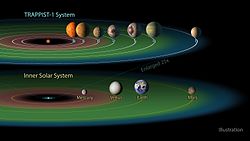The
short-beaked echidna (
Tachyglossus aculeatus) is one of four living species of
echidna. It is covered in fur and
spines, has a distinctive
snout to help detect its surroundings, and uses a specialized
tongue to catch insects. Its extremely strong front limbs and claws allow it to burrow quickly. It repels
predators by
curling into a ball and deters them with its spines. During the Australian winter, it goes into deep
torpor and
hibernation. As the temperature increases, it emerges to
mate. Female echidnas lay one egg a year and the mating period is the only time the
solitary animals meet. A newborn echidna grows rapidly on mother's milk and is expelled into the mother's burrow when it grows too large for the pouch. It leaves the burrow when it is around six months old. The species is found throughout Australia and in coastal and highland regions of eastern
New Guinea. It is not threatened with extinction, but human activities have reduced its distribution in Australia. This photograph shows a
Tasmanian short-beaked echidna (
T. a. setosus), a subspecies of the short-beaked echidna, near
Scottsdale, Tasmania.






